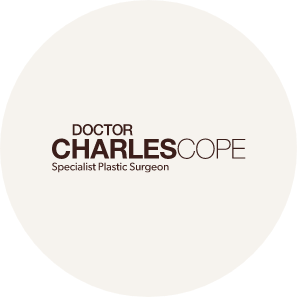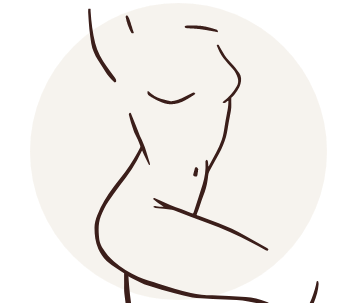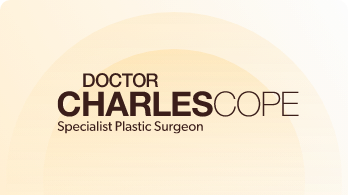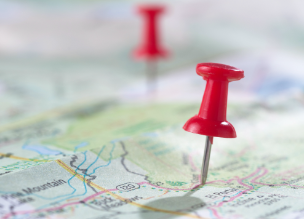Liposuction (liposculpture) removes localised deposits of fat from anywhere on the body, with the most common areas for liposuction being the abdomen and thighs. Liposuction (liposculpture) can also be used in men to reduce enlarged breasts (gynaecomastia).
Large areas of liposuction (liposculpture) are performed under general anaesthetic, although small areas can be performed under local anaesthetic and sedation as a day surgery procedure.

The operation involves making several small incisions, and fluid containing local anaesthetic is used to fill the area, after which the fat is removed through a narrow tube (the actual liposuction).
Most people return to work within 7-10 days following surgery, although with large areas the recovery time may be longer*. After surgery, a pressure compression garment must be worn for a few weeks, which minimises the bruising and swelling and helps produce an even contour.
Heavy activities and sport should be avoided for one month. Most of the bruising and swelling will have gone by three weeks, although the final result may not be apparent until 3 months following liposuction*.
*Note results may vary from person to person
This procedure is not a substitute for diet and exercise, but is used for localised areas of fat not responsive to traditional weight-loss methods. *The success of the liposuction (liposculpture) procedure depends on the skin’s elasticity, which decreases with age, and the best results are obtained in young patients. If there is a significant amount of loose skin then other surgery may be needed to produce the best change in body contour, such as an abdominoplasty .
If you have some loose skin on your buttocks then the fat can be injected back into your buttocks, giving a firmer, higher and rounder buttock (buttock lift with fat transfer).
Dr Cope will consult with you to work out the best method for obtaining the results you want.
Frequently Asked Questions
Liposuction reduces bulges that you just can’t get rid of with diet and exercise.
The most important things that determine the result from liposuction are your age and quality of your skin. Liposuction reduces the amount of fat under the skin can relies on your skin elasticity in taking up the resulting loose skin – the younger you are the better your skin elasticity and the better your skin takes up after liposuction. If you have some loose skin (e.g. after weight fluctuations or weight loss), cellulite, or scars in the area then this will limit the amount the skin ‘takes up’ after liposuction, and may therefore limit the amount of liposuction that can be performed.
The total costs of liposuction may vary and are based on the following factors:
Body area/s that need treatment
The cost of the procedure will depend on the size and number of body areas requiring treatment.
The amount of fat that needs to be removed
Removing large amounts of fat will need more procedure time than areas with smaller amounts.
Surgeon’s fee
This will depend on the experience and expertise of the surgeon. It can also depend on the amount of time and effort required of the surgeon to achieve the desired results.
Hospital fees
This includes the materials and equipment used during the procedure. The length of hospital stay may also affect the cost.
Other costs
Before the procedure, you may need certain medical tests to assess your health. Separate costs may also include fees for prescribed medications and compression garments.
In most cases, liposuction is not covered by Medicare or your private health insurance since it is a cosmetic procedure.
Small areas eg neck liposuction can be performed under local anaesthetic in the rooms and costs about $6,000.
Most liposuction surgery is performed in hospital and cost (including surgeon, anaesthetist and hospital fees) starts at around $9,000, although this can vary depending on the area/s treated. After your consultation with Dr Cope, we will provide you with a detailed breakdown of the involved costs.
Liposuction (liposculpture) reduces the amount of fat under the skin and relies on your skin elasticity in taking up the resulting loose skin – the younger you are the better your skin elasticity and the better your skin takes up after liposuction (liposculpture).
Liposuction can be performed at any time of the year. However, everyone gets some bruising and swelling after the procedure, which can restrict swimming, walking on the beach and other sporting activities in summer. After liposuction a compression garment needs to be worn for at least a few weeks (sometimes up to 6-8 weeks), and it is more comfortable to do this in the winter months.
Liposuction reduces bulges and for most patients the pinch thickness is somewhere between one third and one half of what is was before procedure * (results vary from person to person).
Providing you stay at a stable weight after liposuction (liposculpture) the result will be permanent. Weight fluctuations (more than 5kgs) can sometimes change the result, as liposuction reduces the number of fat cells in the area permanently, making it harder to put on weight in that area. Large fluctuations of weight can create bulges in other areas, as the fat being deposited has to go somewhere.
Most liposuction is performed under general anaesthetic in an accredited hospital, either as a day-surgery procedure or overnight stay, depending on what you are like with recovery from anaesthetic and how much liposuction is performed.
Liposuction reduces the amount of fat under the skin using small (approximately 5mm) incisions and relies on your skin elasticity in taking up the resulting loose skin. Although red for the first few months these scars are rarely visible down the track.
There are various non-surgical alternatives to liposuction surgery, however these can only treat small areas at one time, and therefore require multiple sessions (often 6-8) to achieve the same result as one session of liposculpture.
During the first week after surgery you need to rest and take things quietly at home. When you go home there will be waterproof dressings covering the wounds, which normally stay on for one week, allowing you to shower normally. You should wear your compression garment the whole time, which needs to be worn for at least a few weeks (and for some people 6-8 weeks). Most people feel well enough to drive to the postoperative visit, which is usually 5-7 days later, and are back to work by this time*.
For most people it is 3-4 weeks until they are ready to return to sport and full activities*.
*Note results may vary from person to person



